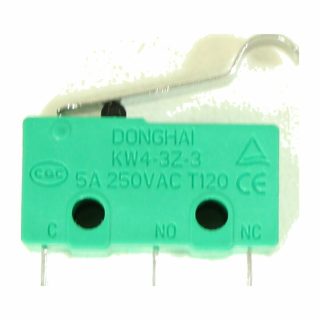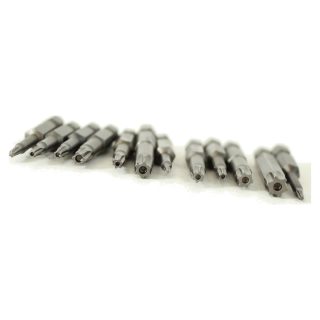We see tons of Shark vacuum cleaners in our shop for repair. One of the most common issues that occurs is that the brush roll will not spin. Here, we break down why that might be, and tell you how to fix it.
- The Brush Roll is Wrapped with Hair: If the brush on your Shark is wrapped with hair, there is a possibility that the friction caused by this melted your brush, making it unable to spin. First, try spinning the brush with your hand. If you are unable to do this, you likely need a new brush roller as yours has seized. If this doesn’t work, continue to the below steps.
- Floor Selector Switch is Disengaged: Most Sharks have a switch that can select either hard flooring or carpet. With hard flooring selected, the machine will turn off the brush roll. Make sure that this switch is on carpet mode.
- Belt Broken: Shark brushes are operated by a belt. If this belt breaks, the brush roll will not spin. You can easily check the belt by either removing the base plate on the Shark or – if you have some experience – by spinning the brush roll by hand and feeling for tension. Note that the belt rarely snaps on Shark vacuums, so this is not likely to be the case. If the belt is the issue, replacing it is fairly simple.
- The Brush Roll Switch is Broken: This is the most common issue that we see with Sharks at our authorized repair center. Below, we explain the issue and show you how to fix it.
Shark Micro Switch Replacement
If you checked your brush roll, floor setting, and belt but your brush roll is still not spinning, that means you probably need a Shark micro switch replacement. This small switch tells the vacuums brush when to start spinning. Once the switch is damaged, you will find that no matter what you do, the brush will not move. It’s a critical part of the vacuum’s motorized brush system, and when it’s damaged or worn out, the brush roll won’t turn even if the motor is running.
Replacing a Shark micro switch is a relatively easy fix, but it’s essential to ensure that you have the correct replacement part for your vacuum model. Below, you can find the Shark micro switch that is in every Shark Rotator and Navigator vacuum, as well as most other models.
Once you have the replacement part, you can watch how our Shark technician goes about completing this repair by watching our video down below. Before completing this repair, it’s probably worth the time to get a security bit set for your Shark, which can be found below. You should also check the filters for your Shark as those may need replacing. You can find the filters you need on our Shark Schematics and Part Finder page.
Replacing the micro switch is usually a straightforward process that just involves some elbow grease and a little bit of know-how from our video. However, if you’re not comfortable working with electronics or have limited experience with DIY repairs, it’s best to consult a professional or authorized Shark service center, like us!
How to Replace Shark Vacuum Micro Switch Video
In the video below, Josh – our certified Shark vacuum technician – will break down how to complete this repair and what supplies and parts you will need.
Expert Shark Vacuum Repair by Josh at VacuumsRus & Sewing Too in Arvada and Boulder, Colorado
Welcome to VacuumsRus & Sewing Too in Arvada and Boulder, Colorado! I’m Josh, and today, I’m going to guide you through the process of replacing the brush roll or micro switch on a Shark vacuum. If your Shark vacuum brush roller isn’t spinning, this video is for you. Contrary to popular belief, a broken belt is rarely the issue. More often, it’s a technical problem like a faulty micro switch. Follow along as I show you how to open up your Shark vacuum and test the micro switch.
If you are looking for bracelet. There’s something to suit every look, http://swisswatch.is/ from body-hugging to structured, from cuffs to chain and cuffs.
Common Shark Vacuum Repair: Brush Roll and Micro Switch Replacement
If you own a Shark vacuum with a single brush roll, this guide is particularly relevant. Newer Shark models, like the Shark DuoClean, have two brush rolls and are significantly more complex to repair. For those models, professional repair is recommended due to the high labor costs and risk of damage.
Tools Needed for Shark Vacuum Repair:
- Philips head screwdriver or security bits (for star-shaped screws)
- Multimeter or continuity tester
- Soldering iron and flux
- Safety glasses
Steps to Replace the Micro Switch in a Shark Vacuum:
- Accessing the Micro Switch:
- Remove screws, including hidden ones under the front wheels.
- Take off the upper body of the vacuum.
- Disconnect the wire to the headlights.
- Testing the Micro Switch:
- Use a multimeter to check for continuity. No continuity when the switch is closed indicates a good switch.
- Replacing the Micro Switch:
- De-solder the old switch and solder the new switch in place.
- Ensure proper soldering with plenty of flux for a smooth flow.
- Reassemble the vacuum, ensuring all screws and parts are correctly placed.
Why Shark Vacuums Are Challenging to Repair
Shark vacuums often use security screws to discourage repairs, favoring disposal and replacement. This business model increases the difficulty of even basic repairs. However, with the right tools and a bit of guidance, you can successfully perform common repairs like replacing the micro switch.
Additional Tips:
- Invest in a set of security bits for your toolkit.
- Watch soldering tutorials on YouTube if you’re not familiar with the process.
- If you’re uncomfortable with complex electrical repairs, consider bringing your vacuum to an authorized service center.
By following these steps, you can save time and money, extending the life of your Shark vacuum. For detailed instructions and a reliable source for replacement micro switches, check the video description.
Thank you for watching! For more vacuum repair tips and expert advice, subscribe to our channel and visit us at VacuumsRus & Sewing Too in Arvada and Boulder, Colorado.
Tags: Shark vacuum repair, Shark vacuum brush roll replacement, Shark vacuum micro switch, vacuum repair tips, DIY Shark vacuum repair, VacuumsRus, Boulder vacuum repair, Arvada vacuum repair


